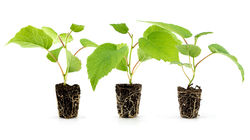 Since kiwi plants are mainly cultivated in protected areas, the title sounds a bit strange at first. However, a coincidence that occurred while producing kiwi plants at our partner company Lubera at the Bad Zwischenahn site has shown that this idea is not as far-fetched as it might seem at first glance.
Since kiwi plants are mainly cultivated in protected areas, the title sounds a bit strange at first. However, a coincidence that occurred while producing kiwi plants at our partner company Lubera at the Bad Zwischenahn site has shown that this idea is not as far-fetched as it might seem at first glance.
The luck of coincidence
Also at our partner company Lubera, the kiwi plants were usually produced under protected conditions in a foil tunnel. However, this resulted in an increased plant loss due to Phytophthora infections, especially with the Actinidia deliciosa varieties. Due to these increased plant losses andthe lack of alternative options, it was decided without further ado to grow the kiwi plants outdoors – not only the Actinidia deliciosa varieties, but also the Actinidia arguta varieties. And why not, both variety groups become woody anyway towards autumn/winter.
Production times of kiwi plants
Although the production managers were somewhat sceptical at the beginning, nobody wanted to return to the original method. So the kiwi young plants were potted and the 5-litre containers were then placed outside on the container area. It makes no difference whether the young plants are of 'Multi' or 'Multi+'. Both qualities develop in about the same way and do very well in this relatively large volume.
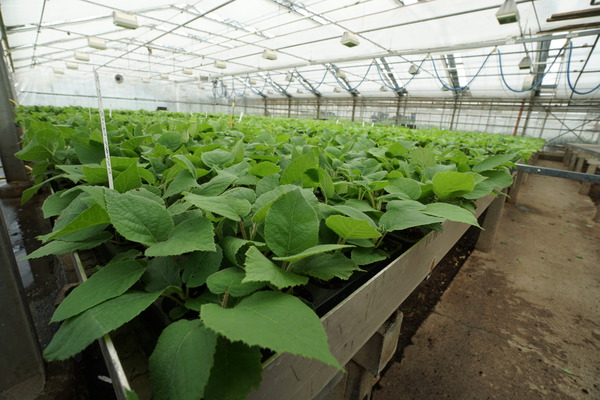
Picture: young plant production of Fuzzy-Kiwi (Actinidia deliciosa)
Nevertheless, you should be patient and not react hastily if the young kiwi plants do not grow as they are used to. Because of the different climatic conditions, the kiwi plants start growing lengthwise in the open a little later than in protected production.
Sequence of production – using the example of our sister company Lubera® at its site in Northern
Germany
Young plants of the quality 'Multi' (spring produced young plants) were delivered in the first week of June. These young plants were then immediately potted into a 5 L pot. The substrate used was a standard container plant substrate, which was fertilised with approx. 4 kg of slow release fertiliser per m³. After potting and watering, the plants were placed directly outside on the container area, on a rack.
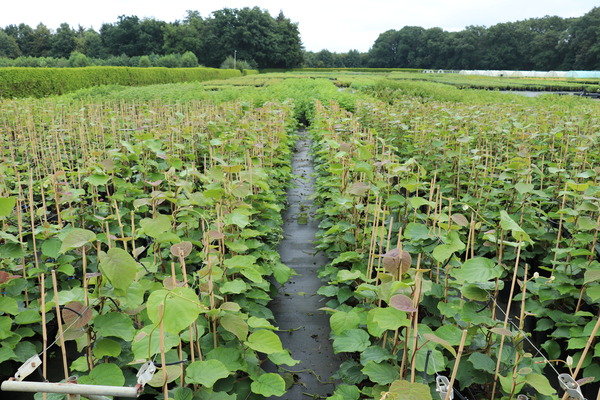
Picture: potted plants of the fuzzy Kiwi Actinidia deliciosa (here in a 5 L pot)
Depending on the weather conditions and nightly low temperatures, it may take several weeks before the plants start growing longitudinally. During this time, the young plants will already start to root through the container. Here the concern can already arise that the plants will not reach the desired height by the end of the growing season. But this worry is unfounded because as soon as the summer temperatures are reached, the plants start their longitudinal growth. This is also the latest time to support the plants using bamboo stakes.
Plants produced in this way were ready for sale after a good 10 weeks without pruning. These plants have mostly on average only about two shoots, which is completely sufficient. For more branched/multi-stemmed plants, pruning is necessary. This pruning should be done when the plants have grown about 15 - 20 cm. However, with this type of cultivation/production you have to count on a production time that lasts at least two weeks longer until the first plants are ready for sale.
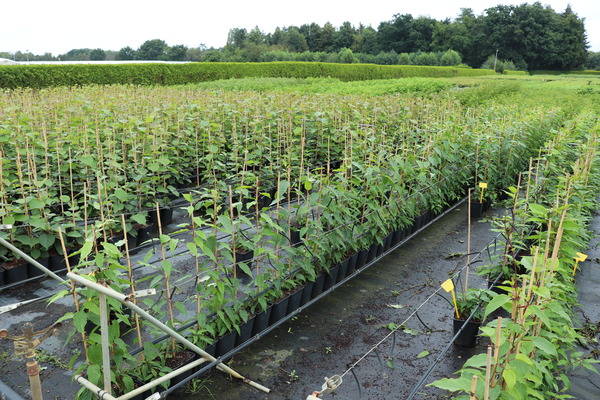
Picture: plants of Kiwiberry (Actinidia arguta) are ready for sale
Schematic production sequence:
- Potting date: Calendar week 23
- Pot size: 5 litres
- Fertiliser: 3-4 kg of slow release fertiliser/m³ in the substrate
- Ready for sale: Calendar week 34 (untrimmed), 1x trimmed = approx. 2 weeks later
Advantages of producing kiwi plants outdoors
The advantages of producing kiwi plants outdoors are obvious. On the one hand, this reduces plant loss due to Phytophthora infections. In addition, more cost-intensive protected production areas can be kept free for higher quality crops. A further advantage of producing kiwi plants outdoors is that the amount of care required is significantly reduced. Plants potted outdoors start to grow longitudinally much later and also grow much less than when they are protected during production. A further advantage of this production method is that the kiwi plants can mature better in the autumn months due to the natural weather conditions, and therefore they also get through the winter better.
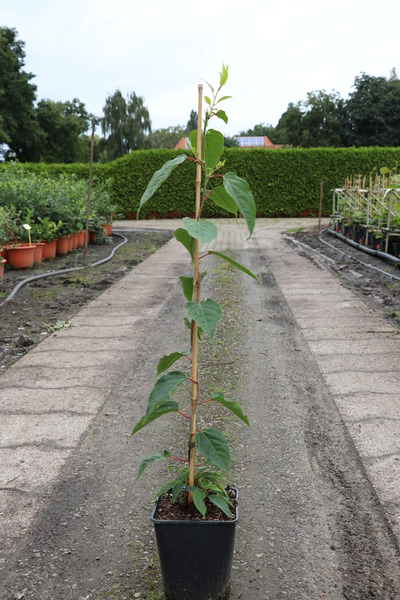
Picture: Kiwiberry plant in a 5 L pot, ready for sale
Overview of the advantages:
- Fewer plant losses due to Phytophthora infections
- Protected production areas can be kept free for higher quality crops
- Lower maintenance cost/savings in personnel costs for maintenance procedures
- Better plant maturity in autumn
Conclusion
By chance, the colleagues at our sister company Lubera® came across the fact that kiwi plants can also be produced in the open and that advantages can be generated from this. These experiences are valid for the Lubera® production site in Northern Germany and the related operational characteristics. However, we believe that this production principle can be adapted to other nurseries throughout Germany/Europe.
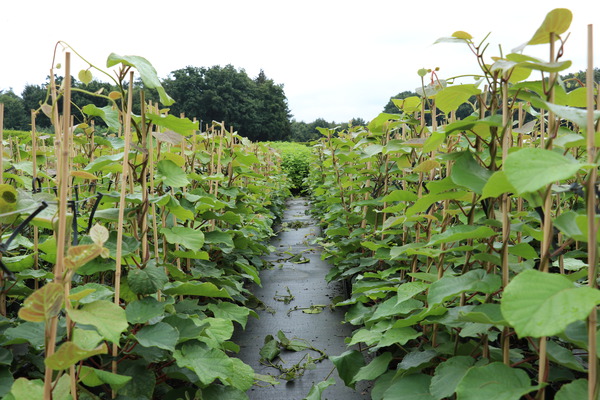
Picture: sellable plant stock of Actinidia deliciosa, here in a 5 L pot
If you still need kiwi young plants, please send us your inquiry right away.
